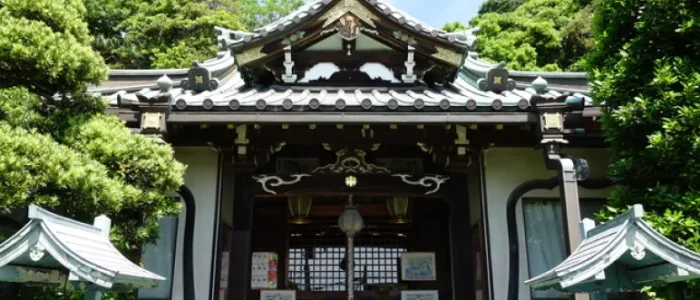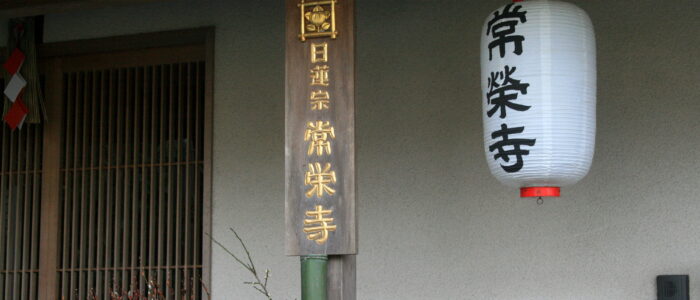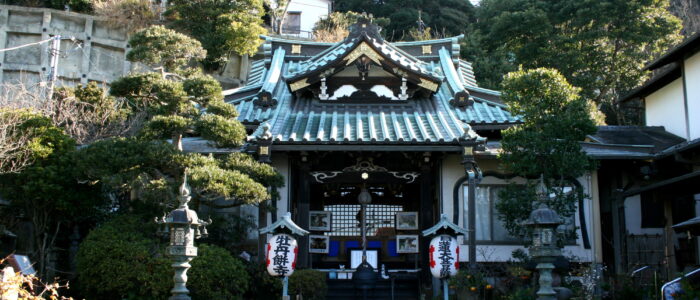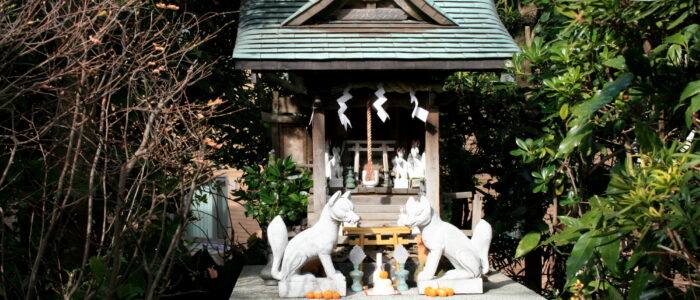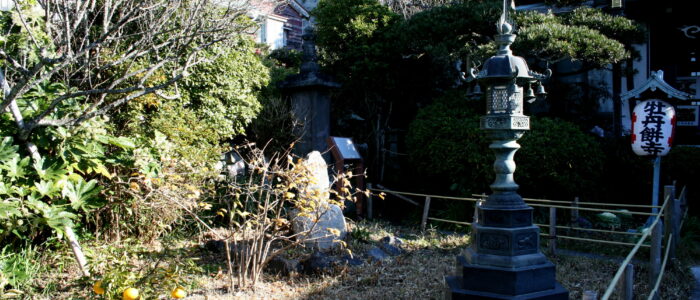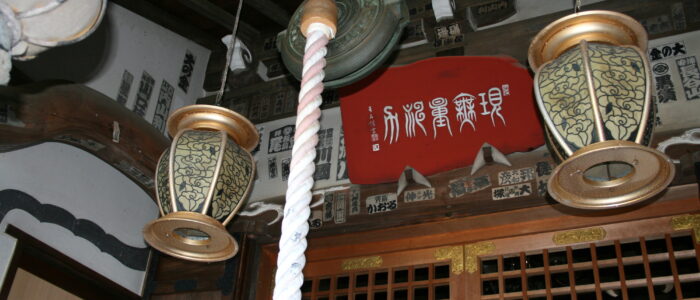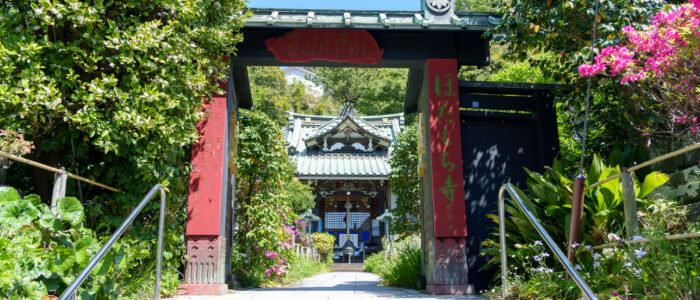Joei-ji Temple (常栄寺)
Discover the Joei-ji Temple
Joei-ji Temple, a Nichiren-sect temple, was founded in the early Edo period (17th century). It is deeply connected to the legendary Tatsunokuchi Persecution. In the late 13th century, Nichiren was condemned as a heretic and was being escorted to his execution at Tatsunokuchi (in today’s Katase area of Fujisawa City). Along the way, a woman known as the “Nun of the Platform” offered him sesame-covered rice cakes. At the execution site, a mysterious light appeared over Enoshima, shocking the officials and causing them to halt the execution. These rice cakes came to be called “neck-saving rice cakes,” symbolizing protection and deep faith.
Photo Highlights and Must-See Spots
Nicknamed the “Rice Cake Temple,” Joei-ji features a small shrine called Sajiki Daimyojin and a stone monument inscribed with a poem. Its principal image is the Sanpo Soshi statue, central to the temple’s devotion. In autumn, flowers such as bush clover, obedient plant, ginger lily, hibiscus, spider lilies, and cosmos bloom across the grounds, creating a serene seasonal landscape.
Embrace the Quiet Hours of Morning
Inspired by the “neck-saving rice cakes” legend, the temple is now visited by those seeking protection from layoffs or hoping for success in job searches. The popular “Neck Protection Amulet” is embroidered with bush clover on the front and peony on the back. This blend of old beliefs with modern meaning highlights the evolving role of faith in society.
Experience Omikuji, Goshuin, and Unique Traditions
Goshuin (temple seals) are offered at the temple office beside the main hall from 11:00 to 12:00 and 13:00 to 15:00. One version features a waka poem referencing the Nun and her offering. Standard goshuin is ¥300; large or special calligraphy versions are ¥500. They are written directly in visitors’ books. If the office is unattended, a bell can be rung for assistance.
How to Get There from Tosh’s Place (トシズプレイス)
Joei-ji Temple is open from 6:00 AM to 4:30 PM daily. Admission is free (donation-based). While there’s no parking, it’s conveniently accessible via public transportation—just a 7–10 minute walk from the East Exit of JR Kamakura Station.
Wrap-Up: A Temple Best Visited in the Morning Calm
Early morning offers the most peaceful visit. Joei-ji holds the Tatsunokuchi Persecution Memorial every September 12th, drawing quiet gatherings of locals and believers. Seasonal flowers also enhance its gentle, reflective atmosphere—best enjoyed unhurried, especially by guests staying at Tosh’s Place.
Nearby Attractions Within Walking Distance
Joei-ji Temple is located in Kamakura’s Omachi–Zaimokuza area, a quiet residential neighborhood rich with temples like Komyo-ji Temple (光明寺), Myoho-ji Temple (妙法寺), Ankokuron-ji Temple (安国論寺), and Anyo-in Temple (安養院)—all within walking distance. Yuigahama (由比ヶ浜) is also nearby for a relaxing coastal stroll.
Who Will Enjoy This Spot Most?
- Those seeking quiet spiritual experiences
- Visitors interested in Nichiren Buddhism and folklore
- Goshuin collectors
- Anyone hoping for blessings in work or life transitions
Tosh’s Place (トシズプレイス) offers flexibility to visit early in the day, enabling quiet moments and cultural depth. The self-paced travel style matches the serene atmosphere of Joei-ji perfectly.
Wrap-Up: A Hidden Temple of Faith and Peace
Joei-ji Temple is a hidden gem, where legend and faith continue to shape lives. From the touching rice cake story to job-seeking blessings, it bridges the old and the new. Staying at Tosh’s Place allows for a mindful visit, offering inner calm beyond the usual sightseeing path.

